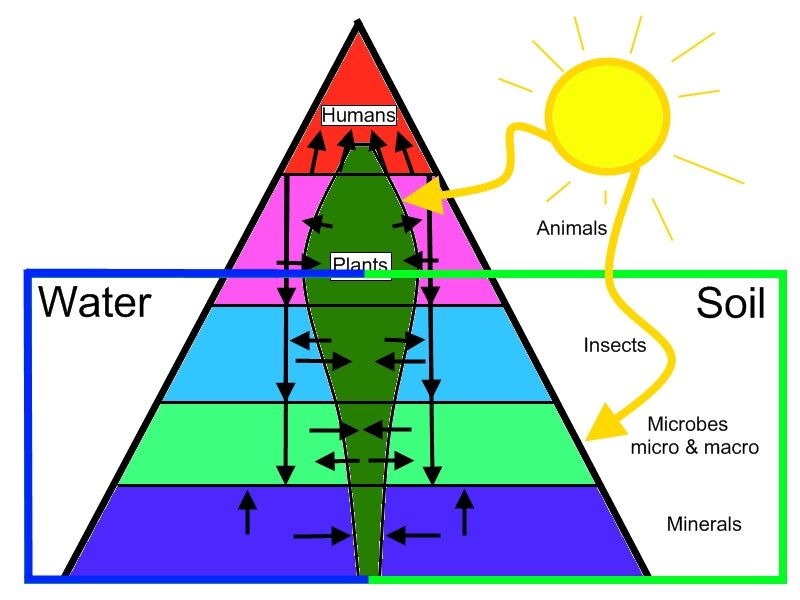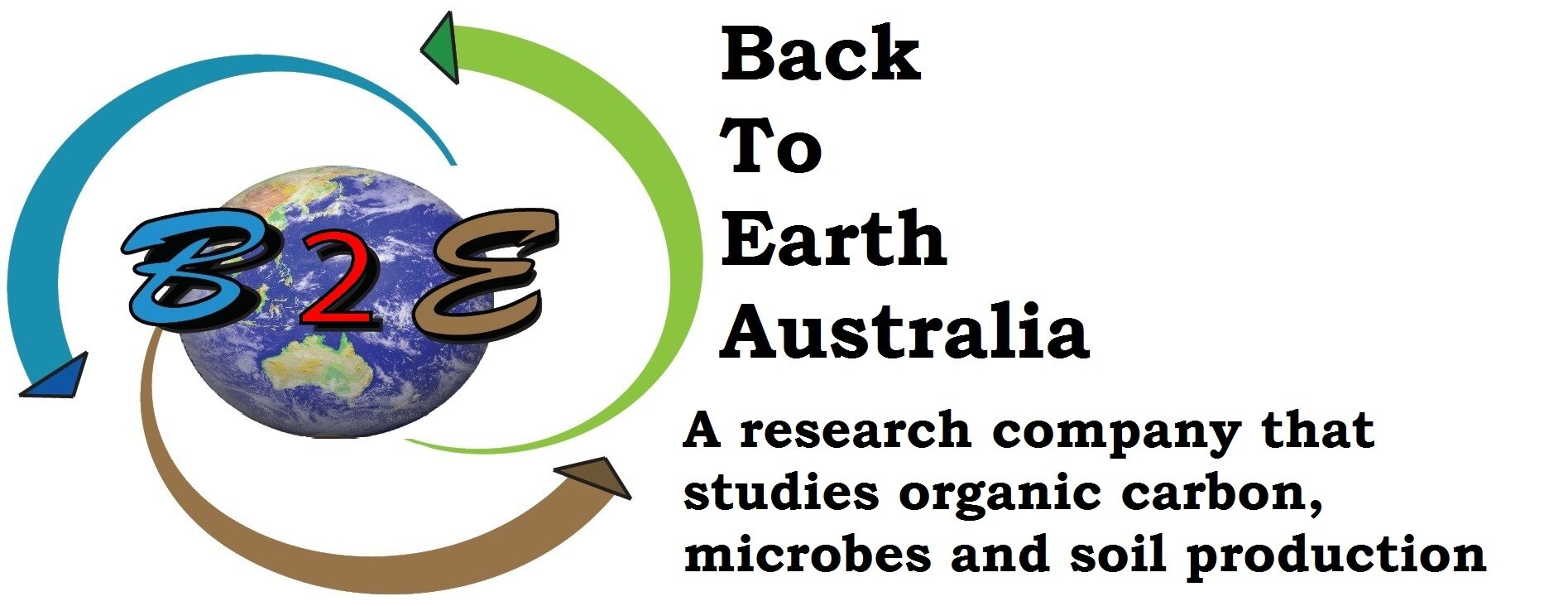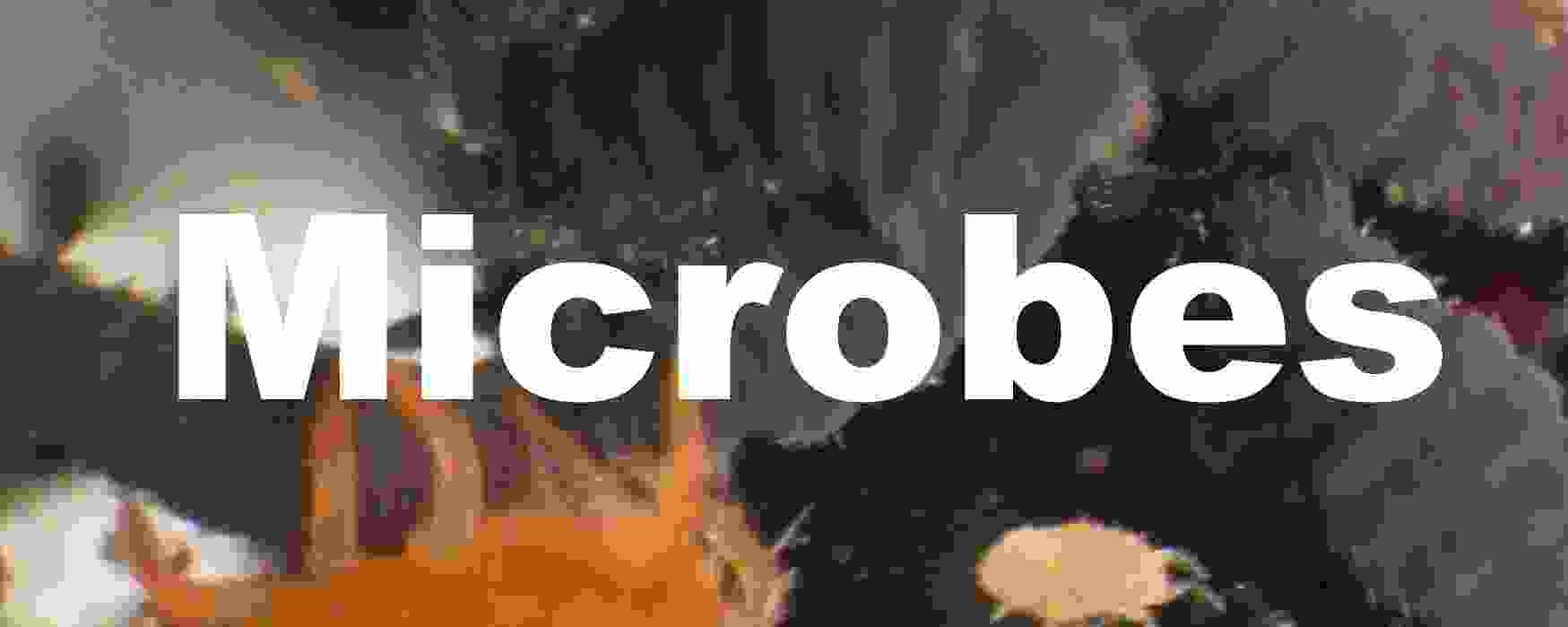Bugs we look for
- Bacteria
- Fungi
- Yeasts
- Protozoa
- Spring tails
- Earthworms
- Pot worms
- Ants
- Isopoda
- spiders and other macro-organisms
Soil Life
A brief story of soil...
Healthy soil is the basis of life for farmers and conservationists alike, and without it crops dwindle or fail, stock fails to thrive and in general nothing reaches its optimal state, which inevitably translates to financial loss. Taking this most important factor into consideration the obvious question is 'how do we make our soil healthier?' Surely serious farmers and conservationists would be aiming at nurturing 'microbial health' for their soil. We humans are inundated by advertisements on how to achieve personal good health, good health for our soil is surely achievable too.
Good soil health is achievable by balancing the millions of species of bacteria and fungi living in our soil, but first we need to get an idea of what has taken up residence in our ground. Screening can take time and money but with the use of identifier organisms we can predict bacteria and fungi presence with a degree of accuracy. Quite simply we can use the number of larger organisms that survive off the smaller organisms, to predict the prevalence of those smaller organisms.
An example of this would be the extreme good health of the soil created in the worm bin in our back yard. This happens as a healthy worm bin encourages birds, mice and rats, not just for scraps but also for the insects and worms themselves. Even introduced species such as Starlings and Black birds provide positive feedback to the carbon system.
Certainly the presence of birds in an environment is a sound indicator as to environmental health, because they live where there is an abundance of food. A healthy soil grows food, insects and worms, unlike humans, nature only works on sustainability therefore, if food is present growth will increase.
When we damage the soil by deforestation, tillage, exposing bare soil and developments, the insects living in the ecosystem disappear as will the birds, earthworms, crops and stock and so it goes on. Enhancing the biodiversity, quality and longevity of soil is the essence of sustainability in nature's terms.
Of course we cannot observe the smallest interactions but chart (1) below shows Of course we cannot observe the smallest interactions but chart (1) above shows the basic arrangement for the elements of life - this is not so easy with viruses. Many species of birds indicate a range of food sources, several types of insects and several types of flowers for example. This "biodiversity" which is a scientific way of saying a range of animals/plants/micro-organisms that represent different genus and species gives indication to the ecosystem's health.
For Big things this is easy. For example watching a bird you can observe it feed, nest and mate. For the smallest interactions it is very difficult. Chart 1 below shows the basic arrangement for the elements of life. From top to bottom things become more complex in interaction, ability to observe and genetic information, this is the best method of understanding the interaction in the soil and water courses, which are hard to study as an overall system. isplacing the local inhabitants is not good for the environment - it creates imbalances and provides niches for pests not common to the area to infiltrate and set up in the habitat.
Potential ways to avoid this:
-
As far as possible try and avoid monoculture of plants - this provides an artificial environment which is not conducive to a biodiverse system.
-
Avoid tilling the soil and eliminating the original habitat - any natural predators to pests will be wiped out.
-
Avoid OVER using inorganic fertilisers - they may contain heavy metals with bioaccumulation effects - May also be toxic to microbes.
-
Once you have a dead paddock from compaction, erosion, salt, sand, pH imbalance or mild contamination- it is probably time you give us a call to discuss your options. Depending on your location we may provide you with advice on possible alternatives, or if you are closer to our proximity we will be able to organise a rejuvenation system for your property.
Special offer
Email us for free advice on which products will suit your unique situation. If you have any scientific tests on your paddock we will be able to best match which products are best for you.
Email us through hereBasic Elements of the Soil

Chart 1: As discussed above : everything flows upwards - minerals begat microbes - microbes begat insects and so on.
Three categories of soil life;
Macro- and Megafauna
Ants, Megadili (earthworms) and termites are soil engineers.
Includes; Mollusca, Coleoptera, Aranedia, Diplopoda, Chilopoda, Amphipoda, Isopoda, Opiliones, Isoptera, Chelonethi, Enchytraeidae & Symphyla.
Mesofauna
Diplura, Protura, Collembola , Acari and Rotifera.
Microflora and microfauna
Bacteria, Fungi, Nematode and Protozoa
References Modern soil microbiology 2nd edn. (2006)
Videos
Small (19 seconds) time-lapse video of the tiny bacteria jostling around MVI_1144_WMV V9.wmv
Small (23 seconds) real time video of the tiny bacteria jostling around with a nematode (background noise)MVI_0420_WMV V9.wmv
Small (51 seconds) time-lapse video of the tiny bacteria jostling around with possible fungi with a softening focus MVI_1184_WMV V9.wmv
Small (48 seconds) time-lapse video of the tiny bacteria jostling around with a nematode MVI_1196_WMV V9.wmv
Pictures
All pictures are taken at a range of magnifications ranging between 40x magnification to 480x magnification for pictures of microbes. The earthworm photos below are not magnified.
Earthworms
Figure 1: Picture of Earthworms
Figure 2: Two Earthworms mating
Nematodes
Several key types differentiated by moth organ.
Bacterial feeding appear as a round inlet at the mouth, with a simple digestive tract in.
Plant feeders appear as a narrower linear square mouth with the resemblence of complicated or sharp objects in the digestive tract.
There are also fewer omnivore and predator individuals whose mouth piece appears like a suction-cupper
Figure 3: Picture of a male Nematode. Idenifible as a male due to the high gamet load in the centre of the organism.
BACK 2 TOP
Figure 4: Picture of a male Nematode. Also organisms that are either ciliates and/or protozoa. Perhaps a fungal eater due to the quare rigid appearance of the mouth.
Figure 5: Picture of a female Nematode. Idenifible as the female due to the ovaries in the centre of the organism. This particular organisms appears to be a bacteria feeder due to its mouth appartus.
Collembola - springtail
Commonly labelled as a fungi eater, has also been implicated in eating nematodes and plants.
Requires at least a 400x magnification for identification. They are gererally white.
Figure 6: Black Springtails with another mite in the right corner.


